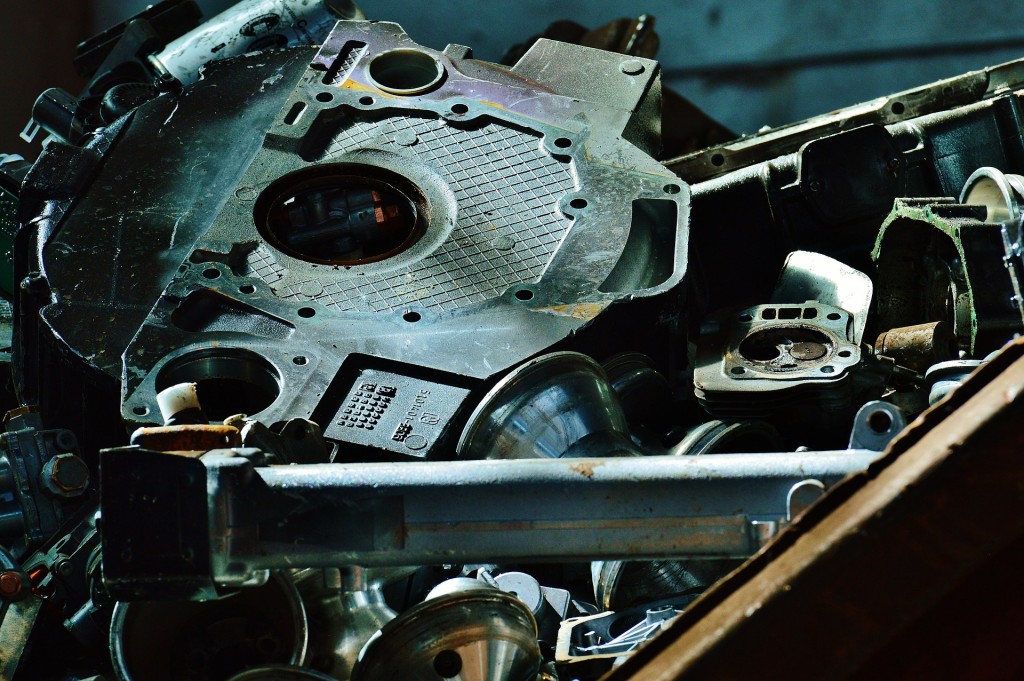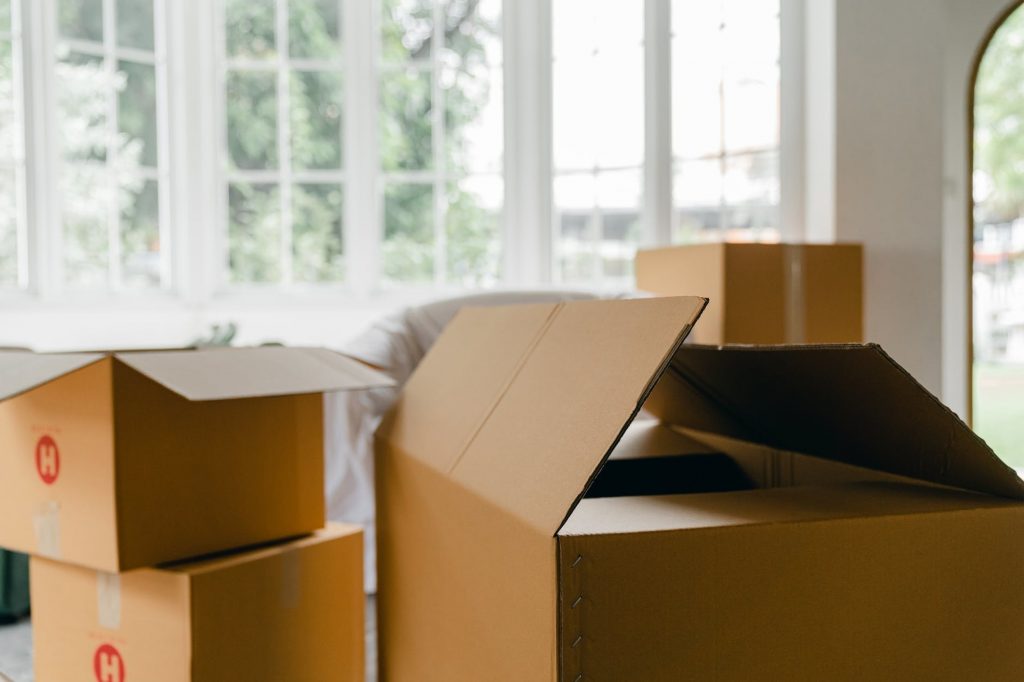
Every year, millions of Americans pack up their homes and relocate. Whether they’re destined for a new house a few neighborhoods away, or an entirely different state, their move will have an environmental impact. From the packing supplies to the transportation used, there is a lot of waste and pollution that comes along with moving. If you find yourself moving this year, there are lots of ways you can think green when it comes to your next move! By following these tips, you can be an eco-conscious consumer, and possibly even save some trees along the way.
Take Time to Purge
Before you even start thinking about loading stuff into moving boxes, take a look around at what you have. The more things you take with you, the more packing supplies you’ll need and the more fuel you’ll burn in the moving process. Now is an excellent time to purge all of those unwanted items that are currently cluttering your closets and clogging up your dresser drawers. Consider donating or selling your used items so someone else can get additional use out of them. If you have old appliances that are no longer working, they can usually be recycled and used for scrap material. Your discarded items should only go to the landfill as a last resort. Not only will purging relieve you of undesired baggage and make your move cheaper, it reduces waste by enabling you to upcycle your goods.

Old appliances can be recycled for scrap metal, rather than being tossed in the landfill.
Let the Packing Begin
Once you’ve sorted out the items that you are keeping, it’s time to start packing. Instead of rushing out and purchasing brand new cardboard moving boxes and packing paper, there are some great environmentally friendly alternatives:
- Recycled boxes: It takes 17 trees to produce one ton of cardboard, which is equivalent to about 2577 cardboard boxes. This may not sound like a lot of trees, but when you consider that the average household needs over 100 boxes to move and that 30 million Americans move every year, that means if everyone purchased brand new boxes, it would take 19.8 million trees to produce those boxes. The great news is, there are plenty of places to find used cardboard boxes for your move to reduce paper waste and help preserve our forests. Grocery stores and other retailers often receive their shipments in a variety of cardboard boxes. Check with your neighborhood stores to see if any will give you their used shipping boxes. Check the copy room at your office to see if there are any extra paper ream boxes laying around, or if you know someone who has recently moved, ask if they have any spare boxes they no longer need.

It takes 17 trees to produce 2577 cardboard boxes. If everyone started using recycled boxes, we could save thousands of acres from deforestation every year.
- Go plastic: There are also a number of options for purchasing reusable plastic tubs. These are great for later storage use in your house or can easily be stacked and put away for future use.
- Newspapers: Instead of buying packing paper, recycled newspaper is just as effective for wrapping up your dishes, glassware, and other breakables. Additionally, you can use towels, t-shirts, and any other soft fabric items you already own as extra cushioning for your fragile items.
Moving Day
Once you’re packed, it’s time to get moving. Depending on the type of move you’re doing, there are different ways you can reduce emissions from fuel usage.
- DIY move: If you’re moving yourself, be efficient by renting a truck that’s large enough to accommodate your belongings in one load. Using a smaller vehicle and making several trips between houses is not only an inefficient use of time, but it also burns far more fuel than just making one trip.
- Local moves: If you’re moving in town, try to use a local mover that’s close to either your old or new residence. The closer the mover is, the less gas they’ll waste getting to your home and moving your things.
- Long distance moves: If you’re using a long distance moving company to move out of state, opt for consolidated service. With consolidated shipping, the movers pick up multiple loads along a route, both maximizing the truck space and reducing the number of trucks needed to deliver the household goods. It’s also much cheaper than using a direct delivery service.
- Vehicle shipment: If you plan on shipping your vehicle(s) rather than driving it to your new home, use a consolidated auto transport service, also known as open car transport. With open car shipping, multiple cars are shipped on one truck, reducing emissions.

After reading the Sunday paper, don’t toss it out. Use it to wrap dishes and other fragile items for your move!
While moving may be an inevitable part of life, you can do your part to ensure your move has the least environmental impact possible. Reduce your carbon footprint and save trees when you follow these tips for moving green!
Additional Eco-Friendly Tips When Moving
Thinking green doesn’t only benefit you but the future generations to come as well. That’s why every logistic that surrounds your move should be approached with the environment’s welfare in mind. Aside from the steps above, here are other ways you can save trees on your next move:
- Plan what to do with your boxes after relocating. Remember how many trees are sacrificed to make cardboard? You don’t want companies to keep producing boxes when current ones in existence can still be used. If you’re not moving any time soon, you can:
-
- Take the boxes to the local recycling center.
- Sell or donate them for charity use.
- Give them away to neighbors.
- Use them for storage or keep them for future use.
- Craft playhouses for your kids or use the boxes for DIY projects.

What should you do with the boxes?
- Properly dispose of hazardous chemicals. Some chemicals are too dangerous to transport, such as gasoline, kerosene, fertilizers, pesticides, antifreeze, and motor oils. These things can cause explosions, corrosion, and poisoning if they leak during transit.
However, just because you can’t bring them along doesn’t mean you can leave them as is. Besides posing a hazard, they can cause irreversible damage to the environment.
So before you move out, give them away to neighbors. You could also research the chemical’s disposal protocol or reach out to the Environmental Protection Agency and ask for advice on discarding the item safely.
- Hire eco-friendly movers. Not all moving companies only care about money. Some share the same love you have for the environment. Ask your potential movers what measures they take in keeping the moving process clean and green.
You’ll know that they’re eco-friendly if they:
- Use bio-diesel for gas and lower-emission trucks.
- Utilized cardboard boxes from previous moves.
- Know how to responsibly discard packing supplies.
- Use green bubble wrap and other eco-friendly materials.
- Plan the quickest and fuel-efficient route to your new home.
- Consolidate deliveries to make a one-way trip.

Not only will you help Mother Nature, but you’ll actually be able to SAVE money, too!
Finally, use the supplies you already have in your home. Besides helping Mother Nature, you can also save some money. Instead of buying packing supplies, use newspapers, old linen, sheets, and blankets to pad your belongings. You could cram books inside suitcases while stuffing laundry in trash bags. Honestly, there are many ways to use household items for packing. You just have to be creative and resourceful!
